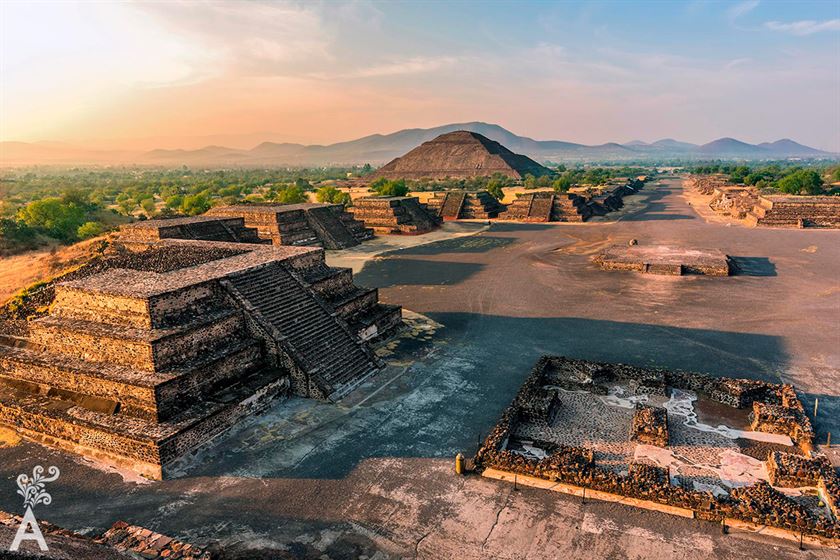Where does the word “Mexico” come from? The origin is from the last civilization that lived in the Great Tenochtitlan in 152, the city of the “Mexicas” (also known as Aztecs). Just as the name of this country has historical roots, the ancestral products and ingredients of the lands at this latitude put Mexico on the international gastronomic runway.
Mexican products can be high-priced when found in European and Asian luxury stores. In Japan, Mexican mangos can cost the equivalent of $50 dollars each. In San Jose del Cabo and the rest of Mexico, hundreds of mangoes end up on the ground in orchards and all they cost is the price of the water needed to make them grow. The same goes for avocados.
Human beings would not be so happy if Mexico had not contributed the necessary ingredient for the production of chocolate – cocoa. The Mexica, or Aztecs, presented the Spaniards with this “superfood” that is rich in natural antioxidants. Since then, cocoa has conquered palates and sweetened our lives. By perfecting production methods, many European countries offer high quality chocolates to the world.
Let’s examine Diego Rivera’s mural at this 16th-century Tlatelolco market. A diverse barter system was commonly practiced by the Mexica and it has not changed in centuries. Mexico and its history are intertwined with its ingredients.
[two_first]
[/two_first][two_second]

[/two_second]
The Mayan book of Popol Vuh says that man is made of corn. This is practically true. In Mexico, we live on corn, as well as beans, tomatoes and chilies. This quartet of products originated in the pre-Hispanic era on a chinampa or plot of land forming a perfect symbiosis for coexistence. The taco is the emblematic dish of Mexico, and without doubt, the tastiest are those eaten in the street!
We also have the nopal and prickly pear, proudly represented on the Mexican flag. Which country includes so much history and also incorporates the basis of its gastronomy on its flag? I can’t think of any other. We have nurtured these products for centuries. Nopales grow in the mountains and their consumption is good for your health.
Another gastronomic jewel is the avocado whose name comes from the Nahuatl “ahuacatl,” which means “testicles tree.” Both the leaves and the fruit were consumed as a medicinal product. Avocados are high in protein, lipids and vitamins. They are also one of the most exported Mexican products. Mexico has no ownership of origin because other regions of Latin America produce it as well. I would recommend you order guacamole when you visit Mexico. The preparation in a molcajete, a pre-Hispanic mortar and pestle, is unique in the world.
Other foods to try are the quelites, edible vegetables or herbs. In Mexico, about 500 species of quelites are consumed, among them the purslane, quintonil, romerito, chia, huazontle, epazote, and the sacred leaf. Stews with these ingredients are rich in vitamins and minerals and bring originality to Mexican cuisine.
The spectacular maguey is a succulent Mexican plant from which agave syrup is extracted and, after a fermentation process, is transformed into pulque, a drink that has been consumed before the arrival of the Spaniards. By continuing the maguey fermentation process, tequila is produced! Tequila was the first denomination of origin Mexican product followed by mezcal.
Legend has it that tequila was discovered during a thunderstorm, when lightning struck a harvest of agave leaves. The intensity of the lightning bolt started a fire and the flames heated the agave to the point a sweet honey-flavor and pleasant aroma emerged. Natives discovered that, when fermented, the product had relaxing powers and effects of euphoria when drunk. As a result, they thought it was a gift from the gods!
Tequila is obtained from blue agave and is the first Mexican denomination of origin (DO) since 1973. According to accepted standards, to be called tequila, at least 51 percent of the sugar must be obtained from blue agave. However, to receive the 100 percent agave tequila name, all the sugar must be from this ancient plant. The most common styles are blanco, reposado and anejo. If you visit Jalisco, tour the tequila houses in the Municipality of Tequila. In particular, try tequila accompanied by a taco with edible maguey larva and Mexican salsa. Exquisite!
What is a Denomination of Origin?
DO is a legal distinction that, in Mexico, is awarded by the Institute of Industrial Property. A declaration is issued when there is a product of unique characteristics or special quality (either natural or manufactured) that sets it apart from similar products and that is identified or designated with the name of the place where it is produced.
The following are other products of denomination of origin in Mexico: Mezcal, cocoa from Grijalva, habanero peppers from Yucatan, ataulfo mangos from Chiapas, coffee from Veracruz, coffee from Chiapas, rice from Morelos, charanda from Uruapan, Michoacan (brandy that uses 50 percent cane juice and 50 percent molasses), the bacanora from Sonora (mezcal family), Papantla vanilla, the sotol (brandy) from Chihuahua, Durango, and Coahuila. The Yahualica chili from Jalisco was awarded the last Denomination of Origin in Mexico in 2018.
We know that over several decades or even as soon as the next five years, some products will be in short supply and perhaps future generations will no longer be able to enjoy them. Due to environmental issues, their numbers have been reduced and the flavors are becoming increasingly artificial. I remember in September 2019, when preparing chiles in nogada, a traditional dish of the Mexican independence parties, it was impossible to find the acitron (sweet cactus). We looked for a product that looked like it, but there was nothing comparable. This is because the biznaga (barrel cactus), where the acitron comes from, is already considered a threatened species and in danger of extinction.
Denomination of origin or not, Mexican products are national treasures that any table will appreciate.







